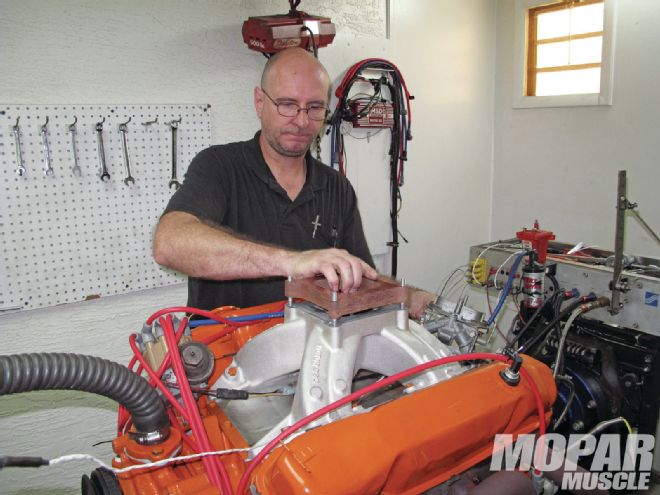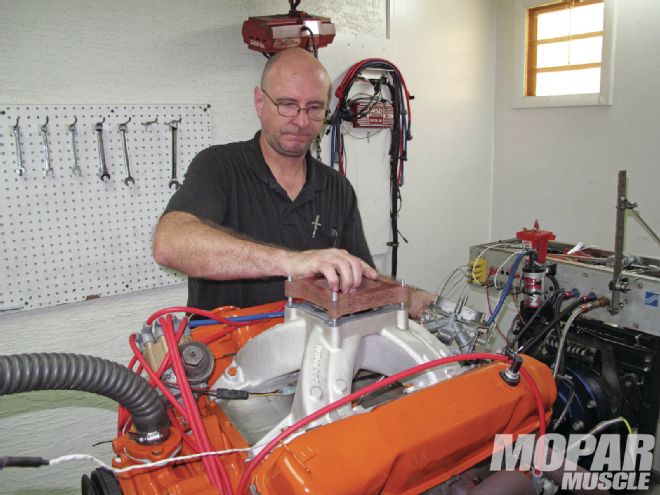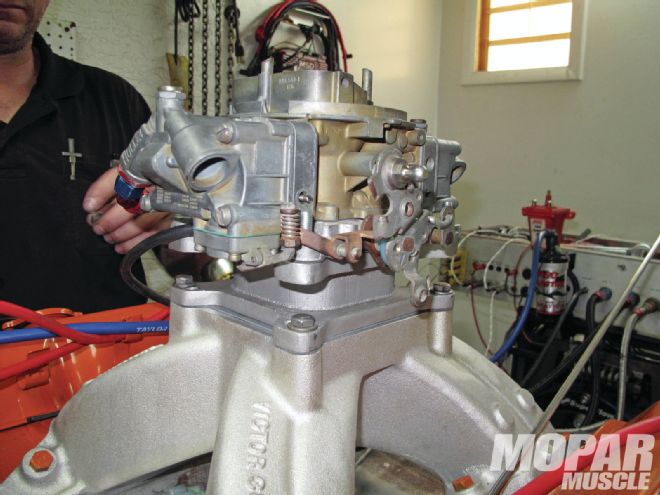
With so many aftermarket parts available for our Mopars these days, sometimes it’s difficult to figure out which ones will really benefit your car. And while many manufacturers claim a part will add a certain amount of power, it’s important to remember that every engine combination is different, so what works on one engine may or may not help yours. We’ve experimented with carburetor spacers on our drag cars for a long time and have had good luck improving our elapsed times and mph in the quarter-mile. This month, we’ll test four different spacers on our 383 dyno mule and let you know the results of each.
 There are many types of carburetor spacers on the market. This month we test four popular styles and see if they really improve power. The engine we’re using for our test is a fairly stock 383 with a Comp flat-tappet camshaft and Edelbrock Victor 383 intake manifold. This basic combination is typical of many big-blocks in our readers’ Mopars, and will serve as a good test of carburetor spacers.
There are many types of carburetor spacers on the market. This month we test four popular styles and see if they really improve power. The engine we’re using for our test is a fairly stock 383 with a Comp flat-tappet camshaft and Edelbrock Victor 383 intake manifold. This basic combination is typical of many big-blocks in our readers’ Mopars, and will serve as a good test of carburetor spacers.
The engine we’re using for this test is a fairly stock 383 Magnum that we built on a serious budget, using parts we had around the shop combined with a few new goodies from Summit Racing Equipment. While we had this engine on the dyno, we decided it would be a good idea to find out if adding various spacers between the intake and carburetor would affect the power and torque that our engine made. So after testing several carburetors and determining that our engine liked a Holley 850, we then tested four different spacers.
Our 383’s baseline dyno pull using no spacer netted 395.7 horsepower at 5,700 rpm, and a peak torque of 391.6 lb-ft at 4,500 rpm. We then tested a 1-inch open spacer and a 2-inch open spacer, which both netted improvements in both torque and horsepower, getting our 383 above the 400 horsepower benchmark. After testing the open spacers, we added first a 11⁄2-inch Wilson tapered spacer, and then a 2-inch version of the Wilson tapered spacer. While the tapered spacers did net a gain in power and torque over our baseline numbers, they weren’t as effective as the open spacers, which indicated our big-block liked plenum volume.
 <strong>1</strong> After our baseline dyno pull, we added a one-inch phenolic open-spacer first, then a two-inch aluminum open spacer. Both added power and torque, but the two-inch spacer gave us the best numbers.
<strong>1</strong> After our baseline dyno pull, we added a one-inch phenolic open-spacer first, then a two-inch aluminum open spacer. Both added power and torque, but the two-inch spacer gave us the best numbers.
During our dyno testing, we proved that all of the spacers we tried improved the power and torque of our 383. And while the tapered style spacers didn’t net the results of the open spacers, we have seen tapered spacers improve power more dramatically on small-block engines we have tested in the past. The bottom line is this: All of the spacers we tested improved the power and torque that our 383 produced, so if your Mopar has enough hood clearance to allow a spacer, adding one is money well spent. Heck, we’d be tempted to cut a hole in the hood or add a hoodscoop to accommodate a spacer if necessary simply because we’re power junkies, but that decision is up to you.
The Cash Outlay PartCost Summit phenolic one-inch open spacer$29.95 Summit aluminum two-inch open spacer$20.95 Wilson 1.5-inch tapered spacer$178.95 Wilson two-inch tapered spacer$196.95
Spacer Test SpacerPeak HP/rpmPeak TQ/rpm No spacer395.7/5,700391.6/4,500 One-inch open401.4/6,100392.5/4,500 Two-inch open402.1/6,100401.7/4,600 1.5-inch tapered400.3/6,000398.6/4,300 Two-inch tapered399.0/6,000396.5/4,400